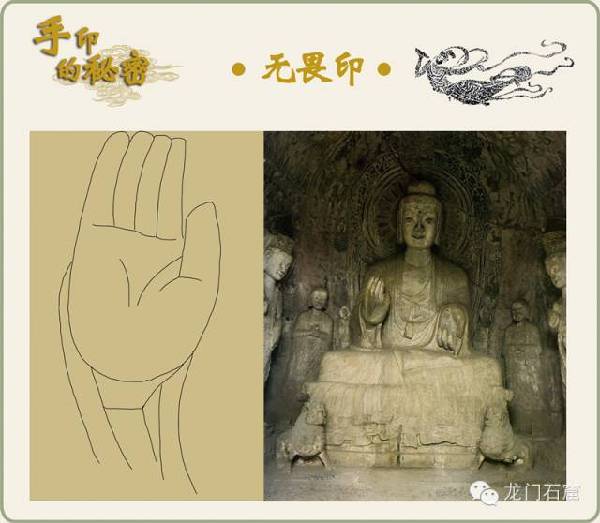Secret of Buddha's hand mudras and Longmen Grottoes
Updated: 2015-10-19
To admire the spectacular Buddha statues in Longmen Grottoes, the treasure house of ancient Buddhist cave art, one has to understand the unmissable hand mudras of the Buddhas.
A mudra refers to a symbolic or ritual gesture in Hinduism and Buddhism. Some mudras involve the entire body, but most go with the hands and fingers.
The gestures of hand mudras have deep connections with the spiritual mind of Buddha. Different Buddha statues present different mudras. Therefore, hand mudra can be viewed as another set of expression and language of the Buddhist Buddha.
 |
|
The Sakyamuni Buddha in Longmen's Binyang Middle Cave and the Abhaya mudra [Photo / Longmen Grottoes on WeChat] |
The main Buddha Sakyamuni in Binyang Middle Cave, Longmen, sits with the Abhaya mudra – "gesture of fearlessness", which represents protection, peace, benevolence and the dispelling of fear. It is usually with right hand raised to shoulder height, arm bent and the palm facing outward with the fingers upright, joined and the left hand hanging down.
The mudra was probably used before the onset of Buddhism as a symbol of good intentions proposing friendship when approaching strangers. It was used in China during the Wei and Sui eras of the 4th and 7th centuries.






